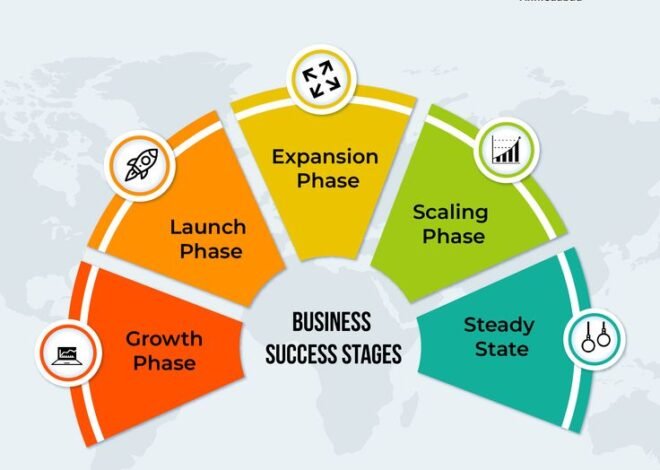
Igniting Your Entrepreneurial Journey: Insights and Strategies for Success
Entrepreneurship is the art of turning ideas into impactful ventures. It’s both exhilarating and challenging, offering the freedom to create something truly your own while demanding resilience, strategy, and constant learning. Whether you’re dreaming of launching a startup, seeking to grow an existing business, or simply exploring the entrepreneurial mindset, this guide is packed with actionable advice to set you on the path to success.
The Starting Point: Transforming Ideas into Action
Every entrepreneurial venture begins with an idea—but ideas alone aren’t enough. To transform your vision into reality, you need a structured approach.
1. Identify a Problem You’re Passionate About Solving
Successful businesses address real problems. Start by observing gaps in the market or challenges people face daily. Ask yourself, “What frustrates me or others around me? Could I create a solution that adds value?” Passion for solving the problem will keep you motivated during tough times.
Example: A founder who struggled to find eco-friendly packaging options might create a sustainable packaging company, tapping into the growing demand for environmentally-conscious products.
2. Research Your Market
Understanding your target audience is crucial. Conduct surveys, hold focus groups, or simply observe buying behaviors in your chosen industry.
- What are potential customers asking for?
- How do competitors address similar issues?
- What pricing model or product feature sets you apart?
A clear picture of your market creates a strong foundation for your concept.
3. Develop a Minimum Viable Product (MVP)
Don’t wait for perfection. Instead, create a simplified version of your product or service that solves your audience’s core problem. This allows you to gather feedback early and refine your offering based on real customer insights.
4. Validate Your Idea Quickly
Use cost-effective ways to confirm demand before going all-in financially. Social media ads, crowdfunding campaigns, or pre-orders can be great tools to measure interest and gauge the market.
Building Resilience: Navigating Entrepreneurial Challenges
Starting and growing a business will test your patience and grit. From financial uncertainty to shifting market conditions, challenges are inevitable—but they also offer valuable lessons.
1. Overcoming the Fear of Failure
Fear often holds aspiring entrepreneurs back. The truth? No success story exists without failure. Failure provides insights you can’t get from theoretical planning.
Mindset Shift: See failure as part of the learning curve. Even when things don’t go as planned, consider what worked and how you can pivot.
2. Managing Uncertainty
Uncertainty is built into entrepreneurship. You’ll rarely have all the answers upfront, so it’s essential to become comfortable making decisions with limited information.
- Tip: Focus on controlling the controllable. Develop a financial buffer, stay informed about industry trends, and adapt your strategies as needed.
3. Defining Success on Your Terms
At times, the pressure of societal expectations or comparisons to other businesses can distract you from your vision. Success doesn’t have a universal definition—it looks different for everyone. Stay anchored to your “why.”
For example, one entrepreneur’s goal may be rapid growth and scaling, while for another, it’s staying small and fostering a family-friendly work culture. Both goals are valid.
The Power of People: Building and Leading a Strong Team
Entrepreneurs often start alone, wearing multiple hats. However, as your business grows, you’ll need a team to help bring your vision to life.
1. Hiring Smartly
Your team shapes your business culture and effectiveness. Hiring isn’t just about qualifications—it’s also about alignment with your values and vision.
- Hire for attitude, train for skill: A passionate, adaptable individual may contribute far more than someone highly skilled yet resistant to change.
- Look for diversity in thought and background. A well-rounded team fosters creativity and innovation.
2. Fostering Collaboration
A collaborative work environment minimizes silos and nurtures open communication. Create a culture where team members feel comfortable exchanging ideas, asking questions, and providing feedback.
Tip: Tools like Slack, Notion, or Monday.com can make team collaboration easier, especially for remote or hybrid teams.
3. Empowering Your Team
Micromanaging stifles creativity. Trust your team by delegating responsibilities effectively, providing resources, and allowing them space to own their roles. Recognize their contributions and celebrate milestones to keep morale high.
Innovation as a Growth Driver
Innovation isn’t limited to groundbreaking inventions—it’s also about improving processes, offering unique customer experiences, or finding fresh ways to market your product.
1. Stay Curious and Open-Minded
Keep exploring trends and emerging technologies in your industry. For instance, AI is revolutionizing marketing, customer service, and product development. While not every trend may fit your business, staying aware allows you to adapt quickly.
2. Gather Feedback Regularly
Your customers are one of your greatest sources of inspiration. Conduct surveys or set up online reviews to discover how they feel about your product—and listen intently.
Example: Netflix initially offered DVD rentals by mail. By listening to their audience and observing industry trends, they switched to streaming services and dominated the market.
3. Take Calculated Risks
While playing it safe has merit, calculated risks often yield the biggest breakthroughs. Ask yourself, “What’s the worst-case scenario? Can I recover from it? What benefits might I gain?”
Finding Balance as an Entrepreneur
Burnout is real. It’s easy to pour every ounce of energy into a business while neglecting health, relationships, and hobbies. However, sustainable entrepreneurship requires balance.
1. Prioritize Health
Your business thrives when you thrive. Keep your energy up with regular exercise and balanced meals. Even short mindfulness practices like meditation or journaling can build mental clarity during high-stress periods.
2. Manage Time Wisely
Time is your most valuable resource as an entrepreneur. Use productivity techniques like time blocking, prioritizing high-impact tasks, and outsourcing non-critical activities when possible.
3. Set Boundaries
It’s tempting to work around the clock, but setting boundaries improves both productivity and personal satisfaction. Reserve dedicated time for family, hobbies, or relaxation and stick to it.
Staying Motivated During the Journey
Entrepreneurship isn’t a sprint—it’s a marathon. Motivation will naturally ebb and flow, but a few strategies can keep your tank full.
1. Celebrate Small Wins
Big achievements like hitting revenue goals are exciting, but don’t overlook daily progress. A simple acknowledgment of completing a tough project or gaining a new customer keeps momentum alive.
2. Stay Connected with Your Why
Whenever challenges feel overwhelming, revisit the reasons you started your entrepreneurial journey. Write down your mission and revisit it during tough times.
3. Surround Yourself with Support
Join entrepreneur communities—online or offline—where you can share experiences, exchange ideas, and learn from others walking similar paths. Networking helps broaden perspectives and provides invaluable encouragement.
Final Thoughts
Entrepreneurship is a dynamic, fulfilling adventure, but it’s not without its challenges. Success in the entrepreneurial world comes from balancing passion with practicality, taking calculated risks, and building a strong support system.
Remember, the key isn’t about having all the answers—it’s about the willingness to learn, adapt, and grow continuously. Forge your own path, lean into your unique strengths, and be prepared to pivot when necessary. Your entrepreneurial dreams are well within reach—now it’s time to take the leap and make them a reality.


